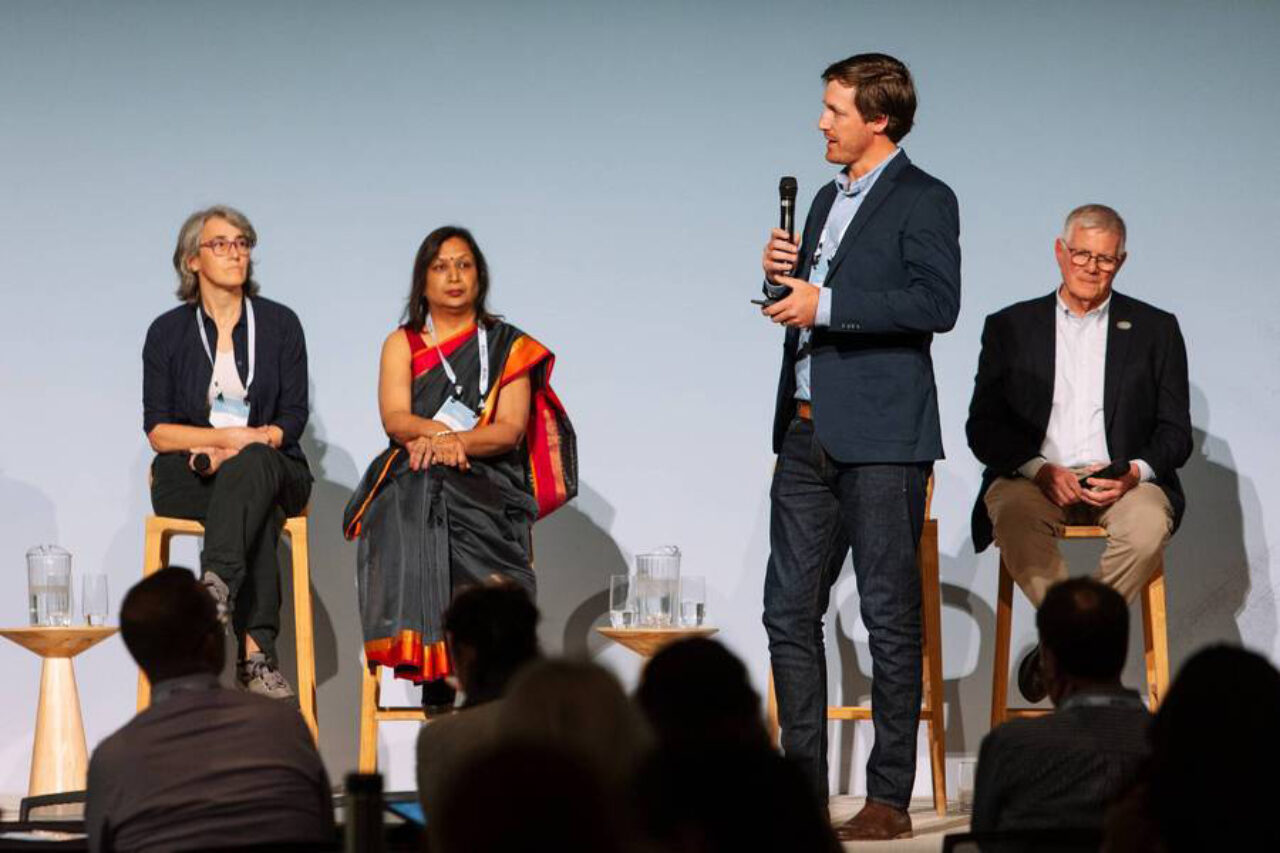
Australia’s cotton industry was well represented on the global stage at this year's Textile Exchange Conference in Pasadena, where regenerative climate, biodiversity and soil health practices were high on the agenda. Bringing together over 1,300 brands, retailers and others working in textile and fashion value chains, the conference facilitated crucial discussions on the future of cotton and other raw materials. One standout gathering featured key cotton programs including myBMP, Better Cotton, the U.S. Trust Protocol, Cotton Connect, and the Organic Cotton Accelerator. This coalition aims to foster a unified voice for sustainable cotton and advocate for aligned strategies in a rapidly changing industry.
Australian cotton grower Daniel Kahl from Wee Waa, NSW, represented the industry on two panels centred around resilience and regenerative agriculture, where he shared valuable insights on sustainable cotton practices. He also spoke during a popular lunchtime Spotlight Conversation, where attendees could ask questions directly to a farmer producing the cotton they work with—a rare opportunity to bridge the farm-to-fashion gap.
Reflecting on the conference, Daniel noted the value of engaging with a range of voices across the supply chain. “As growers, we consistently encourage people to visit our farm to understand our practices firsthand,” he said. “It’s essential for us to inform others about what we do and in turn seek insights of the supply chain's expectations that will help us meet market expectations.”
A key topic at the conference was incoming global legislation that will mandate sustainability reporting and supply chain transparency, right back to raw materials. advocacy and policy to influence and support the cotton industry’s adaptability to future demands. Daniel emphasised the importance of Cotton Australia’s policy work in this space as on par with other policy areas like water management and market access, noting, "It’s vital to stay informed and actively participate in policy discussions.” By engaging in these dialogues, we can ensure as an industry that evolving sustainability policies reflect the realities of cotton production while meeting the high standards of global markets.”
The conference highlighted the power of collaboration, offering industry players valuable insights and shared commitment to advancing sustainability in textiles. Looking to the future, Daniel was optimistic about Australia’s position within the textile supply chain. "We’re already ahead of many other producing industries in terms of sustainability," he said. "The next challenge is enhancing data collection to improve traceability and reporting requirements, to help brands make informed choices." While there’s still work to be done, Daniel believes the Australian cotton industry is well-prepared to tackle new challenges, making strides toward a more resilient and sustainable supply chain.
